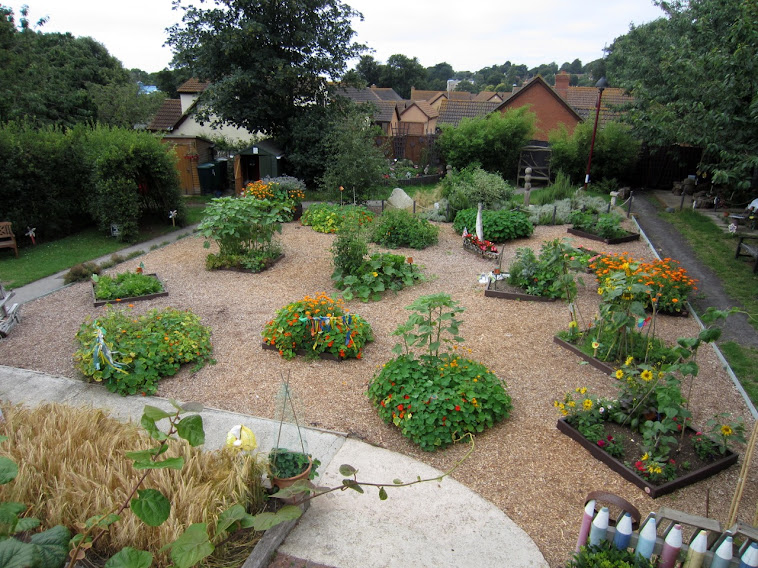You can't really see the shed in this photo but if you look very carefully you can see the green bit below that white bit and that is the living sedum roof (common name Stonecrop) of the shed.
The shed is constructed of oak so will therefore be around long after the rest of us are dust. It came with a built in desk and two long benches. It is very deluxe in the sense that it has its own electricity supply from a small solar panel and wind turbine that feeds into a car battery under the desk. The battery can power the light in the event that anyone should be in the garden in the dark. It can also boil a very small kettle in about half an hour.
The sedum roof came in a roll like a carpet and was laid like a carpet. This week I took a ladder to look at the roof and assess the condition. As you will see from the photos there is some loss of plants but they have re-established themselves between the paving stones at ground level. I have a plan for how we can repair the bald patches which is part of another planned project.
 |
| The shed |
 |
| Patchy in places but still living |
 |
| The sedum colonising the paving |
I am unable to exactly identify this sedum but this link at wikipedia gives lots of details of the species.
The sedum roof really does work as a form of insulation and our shed is lovely and cool in the summer and nice and cosy in the winter.
 |
| Lots of teaching resources and garden information |




















